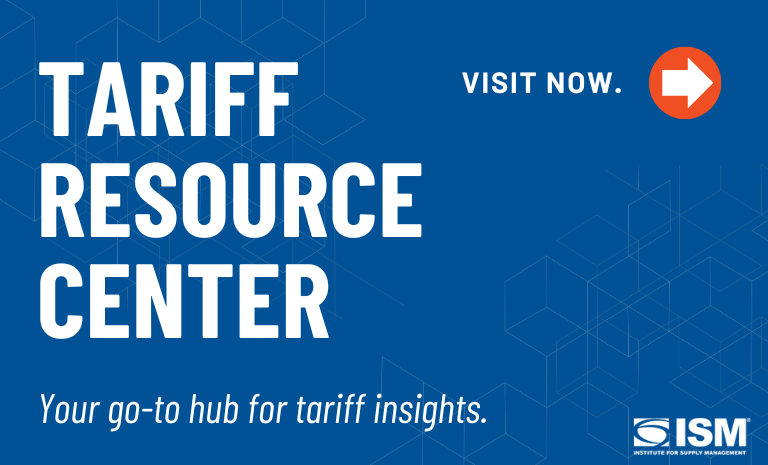Data Is Critical to Collaboration Between Procurement and Finance

That collaboration with finance is vital to balance cost efficiency with resiliency and innovation — and, more importantly, achieve company objectives — is an inescapable truth for supply management organizations.
Inside Supply Management® has focused on this dynamic often, most recently in a feature article in the September/October issue. The relationship is no less critical for freight companies, as detailed during “Explain It to Finance: Freight Decisions That Hold Up Under Scrutiny,” a webinar last week by Xeneta, the Oslo, Norway-based digital freight platform.
The foundation of that relationship — where procurement builds forecasts and budgets that finance can support — is good data, said Antonio Schiano-Lomoriello, MBA, lead value engineer at Xeneta.
“When you have data that can back up your reasoning, that will usually be accepted by finance,” he said. “You’re showing that there’s no guesswork or that you’re hiding anything. And you can show them in a graphical way, which most finance people love.”
Schiano-Lomoriello and Xeneta CFO Hugo Grimston discussed how data that better provides predictability is critical in the current environment of freight-rate volatility, which was set in motion by the coronavirus pandemic and exacerbated by the Suez Canal blockages, port labor turbulence, the Russia-Ukraine war, Red Sea crises and tariffs.
“Before COVID-19, there were years where there wasn’t much rate volatility and mostly stable performance,” Grimston said. “It was a golden age for procurement professionals, since not much changed. But the pandemic changed everything.” And shocks keep coming.
What CFOs Care About
Regarding logistics, procurement teams typically build forecasts, budgets and risk models around the language they speak — freight volumes, shipping lanes and supplier performance. Those are important factors, but smart operational decisions must be translated into financial terms, so a consensus definition of value can be reached.
Grimston said (1) profit and loss, (2) inventory and (3) budgeting are most important to CFOs and their departments. To emphasize the point, he cited Target, which made news for missing projections in all three areas during the third-quarter of 2024. As a result, the U.S. retailer’s net earnings declined 12.1 percent year-over-year, sending its shares plummeting.
“That shows what happens when supply chain issues impact finance,” he said.

Xeneta CFO Hugo Grimston (left) and lead value engineer Antonio Schiano-Lomoriello, MBA, during the “Explain It to Finance: Freight Decisions That Hold Up Under Scrutiny” webinar.
A CFO’s priority is stable and growing profit margins, which are impacted by freight volatility and supply chain disruptions. Finance hopes supply managers can walk the inventory tightrope between too-high levels that cost money versus avoiding stockouts. And budgets need to be accurate, with no surprises.
Data platforms that provide current and historical freight rates and carrier scorecards help procurement defend spend decisions with no guesswork, Schiano-Lomoriello said. The webinar’s audience could relate: In an informal poll of attendees, 71 percent indicated that freight rate increases or surcharges are the biggest source of friction between procurement organizations and finance.
“Without benchmarks, procurement tends to overestimate,” he said.
Benefits Beyond the Company
Increased visibility into freight rates and carrier performance can provide a real-time basis for budgets, which are too often built on previous years’ rates or supplier quotes, Grimston said. They also provide a powerful negotiation tool with carriers.
“Often, procurement sits at the negotiation table and thinks the carrier knows better than us,” Schiano-Lomoriello said. “This is where a platform is valuable, because you can look at the same data as your carriers. That can bring discussions to the next level and help strengthen carrier relationships through transparency.”
Effective collaboration between procurement and finance in practice, the webinar hosts said, includes clean and accurate accounting, predictability and no surprises, working capital visibility and improved efficiencies. This should translate to margin expansion.
Among the takeaways for procurement, Grimston said:
- Work collaboratively — especially by keeping lines of communication open — with finance to align budgets and forecasts with company objectives
- Defend spend decisions by using the most accurate data for rates and reliability
- Consider index-linked freight contracts to keep rates aligned with real market movements.
By working together, Schiano-Lomoriello said, procurement and finance will be ready when the latter gets its desired answer to the burning question: “Is the market back to pre-COVID conditions?” he said. “What I like to say: The trends are definitely there, but we’re not there yet.”
He cited the Shanghai-to-Los Angeles shipping route, where capacity conditions are conducive to rates falling further, which could encourage new orders.
“With insights based on information collected from the market, a procurement professional can have a straightforward and direct conversation with finance on how the market is shaping up,” Schiano-Lomoriello said.

